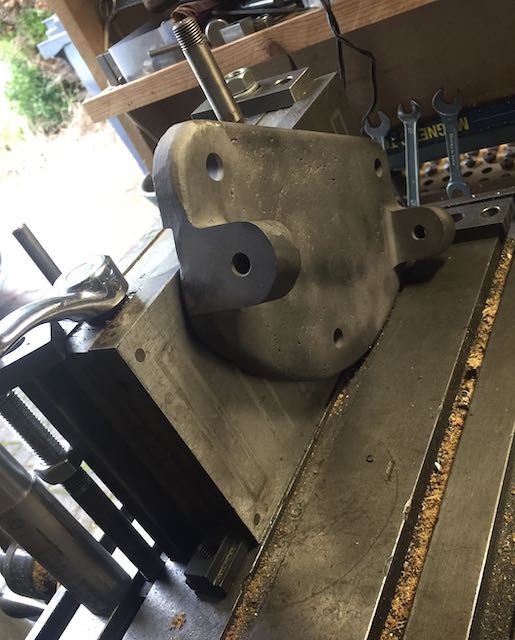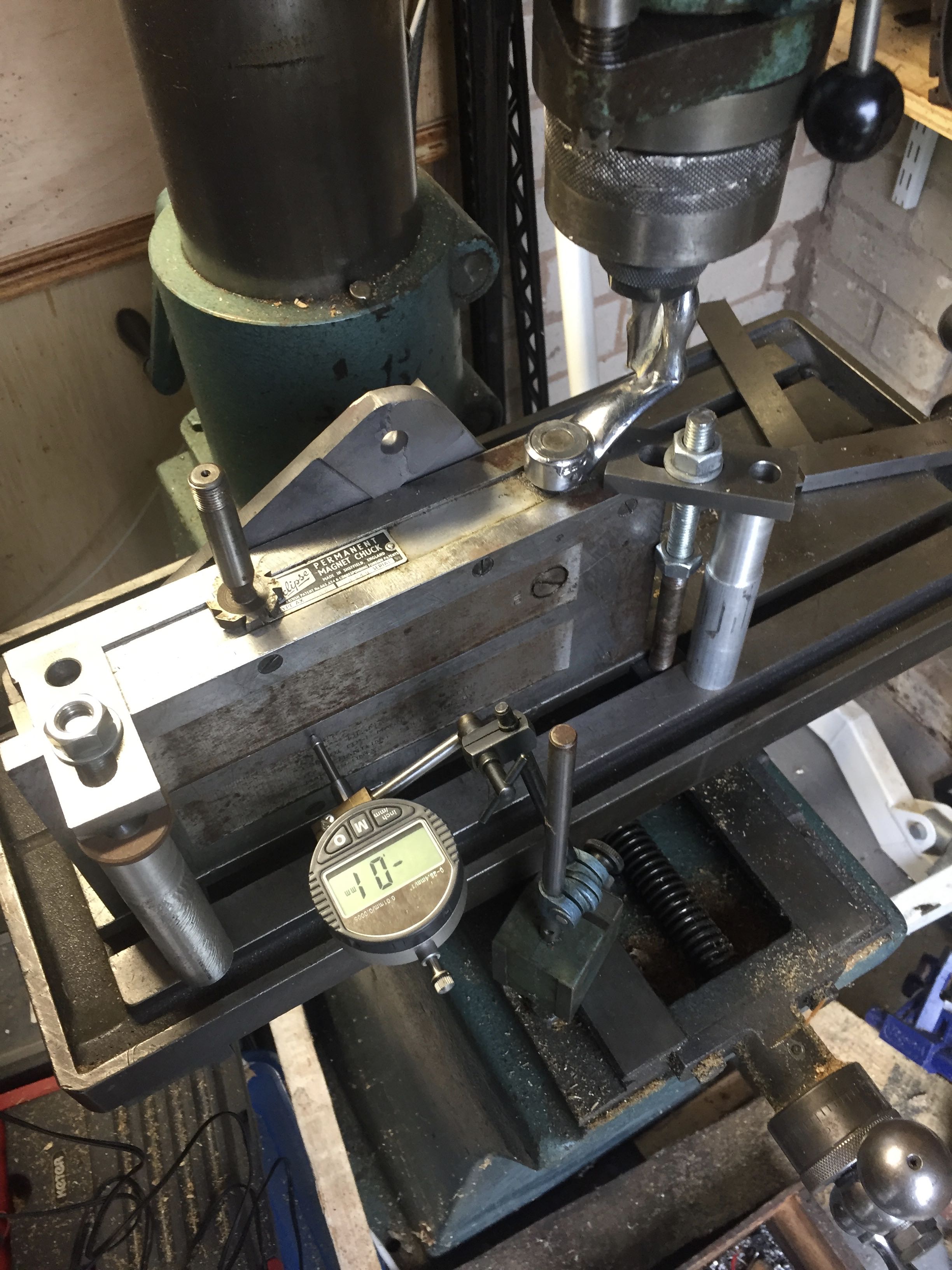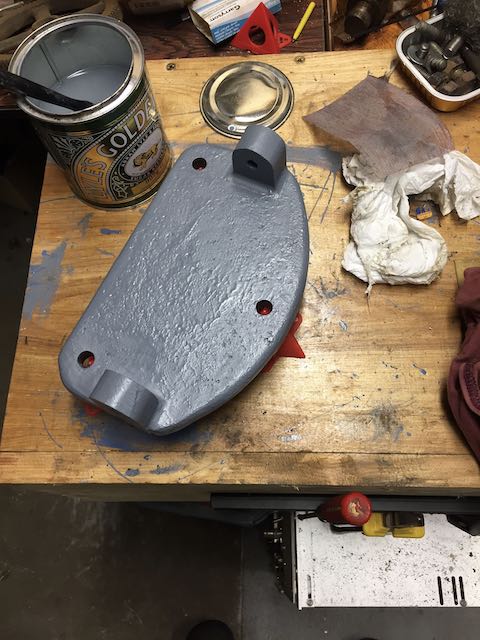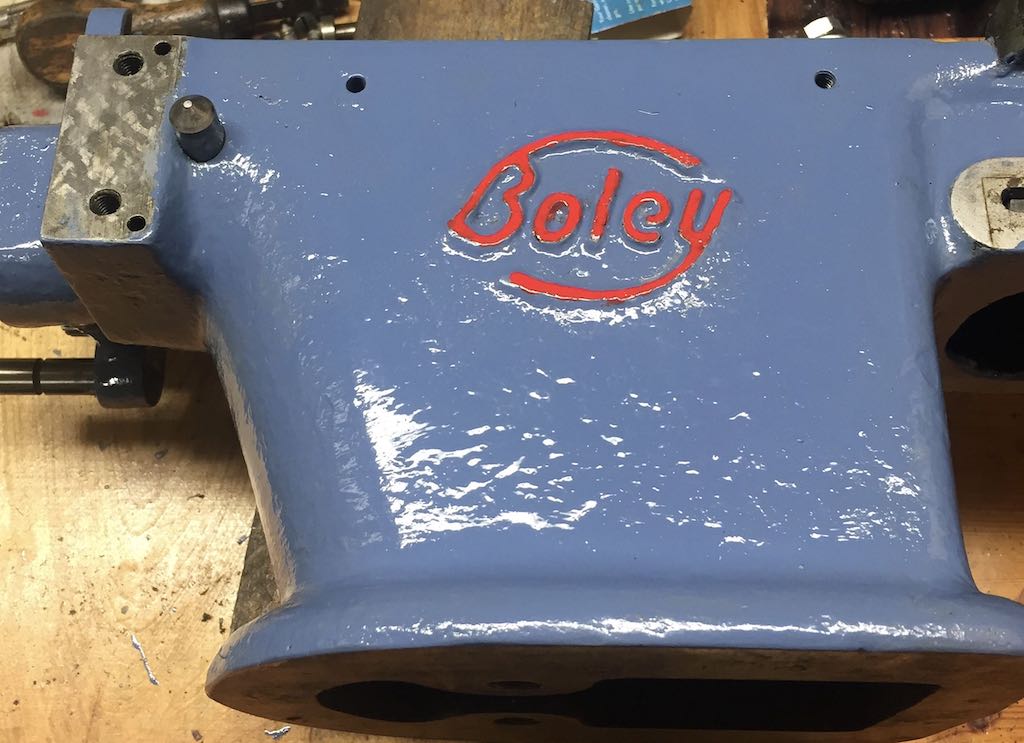This thread (which will take a while to complete) is about the restoration of a Boley lathe that I bought from marcros of this forum. We'd originally communicated about it when he bought the lathe, but when his plans changed and he needed the space he kindly offered to sell it to me for spares for my own Boley No. 4, which we thought it was. On seeing it though, it turned out to be a rather complete Boley No 3L (90 mm centre height not 120 mm), screwcutting, with a complete set of change gears. I think it probably dates from about 1920 - 1925; a slightly earlier version than one shown as 1925 on lathes.co.uk.
This is my metal workshop at present.
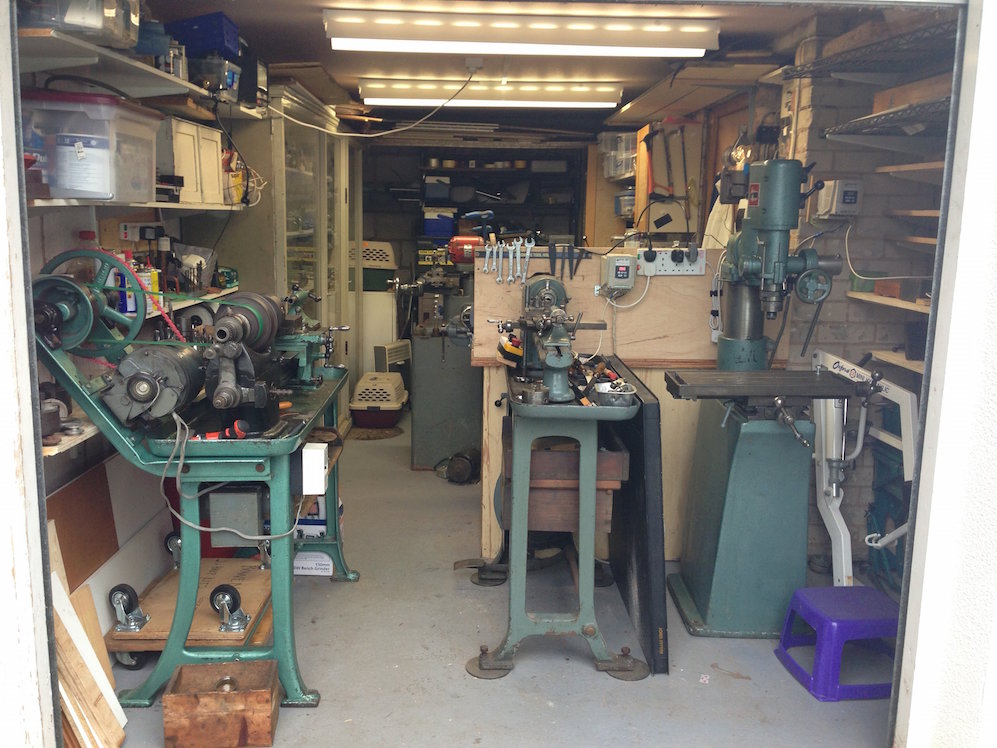
The Boley 4 is at the front left. As you see, it is a screwcutting lathe with good size capacity, though I do not have all the change gears by any means. To the right of it is a Boley No. 3C plain turning lathe. This is a very nice machine from the 1930s, but the lack of screw cutting or power drive is an issue for me. Amazingly, the spindle runout is only about 5 microns after 100 years use! btw that's an Arboga mill on the right.
The new change gears that came with the Boley 3L unfortunately don't fit the 4L. So after humming and hahing to myself I've decided to replace the 3C with the 3L when it is rebuilt. I found a space for it on a strong cupboard/bench that I made about 40 years ago to hold 12" LPs.
So here is the starting point with the lathe mounted on the base with screws from beneath (the socket at the right hand end was broken, but that's no big deal).

Here are the precious gears:

and here's the back with the motor layshaft assembly not yet mounted.

So the present stage is that the lathe is mounted, the holes for the layshaft assembly done so that the belt drive can be aligned with the pulleys, and the cross- and long- slides have been nicely adjusted so that they run smoothly without play. I've examined the main slides with precision level and precision straight edge and the slide wear is very low. I can't get a 0.02mm feeler under the straight edge anywhere, and the carriage runs smoothly all the way without undue looseness or sticking. So it should be a decent screw cutter.
I then came to mount the layshaft assembly and hit the first disaster. The base, which carries the trunnions to allow the layshaft to be loosened and tightened and belts easily changed, broke :-(. I didn't drop or shock it at all, but there was a heavy self-weight on it as I was manipulating it into place. The break matters as it aligns the motor/layshaft plate.

On examining the break with my metallurgist's eye, I could see a quite big discoloured area, where the crack had obviously been growing for a long time, probably years.

So not surprising that it would go, and better now than when I have it all rebuilt and working.
Hmmm, what're the options? Cast iron is notoriously difficult to weld or braze, and the joint is going to be under vibratory stress so needs to be strong. I could epoxy and dowel pin/screw it, though there is a risk of another crack happening as I do that. I could machine another base plate with trunnions fairly easily, but I'd like to explore getting it repaired by a specialist cast-iron repairer. So on Monday or Tuesday I'll be taking it to https://www.shiltoncastironandwelding.co.uk/contact/ at Hinckley (not far from me) with a view to them repairing it. It's probably going to cost a bit but it would be good to keep the lathe as original as possible. They'll do a crack inspection of the component first, and see if there are any other cracks lurking unseen, but if there is just the one main break I think I'll go ahead with that. It will take about three weeks, so back to the rest of the machine. Watch this space if you are interested!
This is my metal workshop at present.

The Boley 4 is at the front left. As you see, it is a screwcutting lathe with good size capacity, though I do not have all the change gears by any means. To the right of it is a Boley No. 3C plain turning lathe. This is a very nice machine from the 1930s, but the lack of screw cutting or power drive is an issue for me. Amazingly, the spindle runout is only about 5 microns after 100 years use! btw that's an Arboga mill on the right.
The new change gears that came with the Boley 3L unfortunately don't fit the 4L. So after humming and hahing to myself I've decided to replace the 3C with the 3L when it is rebuilt. I found a space for it on a strong cupboard/bench that I made about 40 years ago to hold 12" LPs.
So here is the starting point with the lathe mounted on the base with screws from beneath (the socket at the right hand end was broken, but that's no big deal).

Here are the precious gears:

and here's the back with the motor layshaft assembly not yet mounted.

So the present stage is that the lathe is mounted, the holes for the layshaft assembly done so that the belt drive can be aligned with the pulleys, and the cross- and long- slides have been nicely adjusted so that they run smoothly without play. I've examined the main slides with precision level and precision straight edge and the slide wear is very low. I can't get a 0.02mm feeler under the straight edge anywhere, and the carriage runs smoothly all the way without undue looseness or sticking. So it should be a decent screw cutter.
I then came to mount the layshaft assembly and hit the first disaster. The base, which carries the trunnions to allow the layshaft to be loosened and tightened and belts easily changed, broke :-(. I didn't drop or shock it at all, but there was a heavy self-weight on it as I was manipulating it into place. The break matters as it aligns the motor/layshaft plate.

On examining the break with my metallurgist's eye, I could see a quite big discoloured area, where the crack had obviously been growing for a long time, probably years.

So not surprising that it would go, and better now than when I have it all rebuilt and working.
Hmmm, what're the options? Cast iron is notoriously difficult to weld or braze, and the joint is going to be under vibratory stress so needs to be strong. I could epoxy and dowel pin/screw it, though there is a risk of another crack happening as I do that. I could machine another base plate with trunnions fairly easily, but I'd like to explore getting it repaired by a specialist cast-iron repairer. So on Monday or Tuesday I'll be taking it to https://www.shiltoncastironandwelding.co.uk/contact/ at Hinckley (not far from me) with a view to them repairing it. It's probably going to cost a bit but it would be good to keep the lathe as original as possible. They'll do a crack inspection of the component first, and see if there are any other cracks lurking unseen, but if there is just the one main break I think I'll go ahead with that. It will take about three weeks, so back to the rest of the machine. Watch this space if you are interested!








































